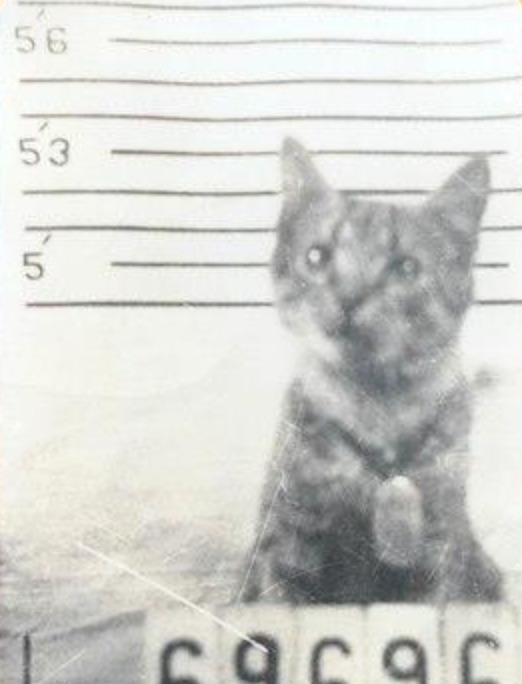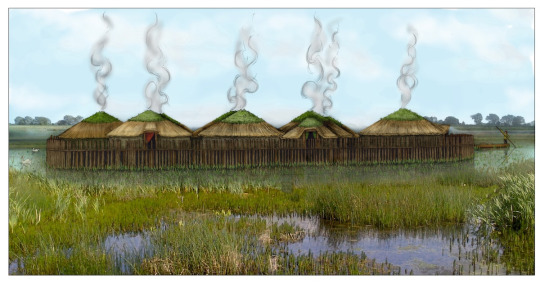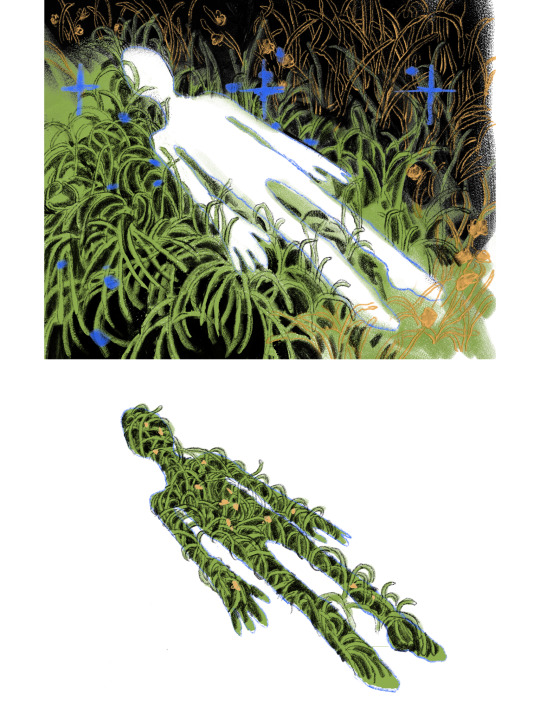Text
932 notes
·
View notes
Text
In 1944 a kitten named George (short for General Electric) was saved from drowning by a U.S. Navy crew member. George was then photographed and given a liberty card and detailed health record. Source.


190K notes
·
View notes
Text
This starts out as a nice gesture, then quickly becomes absolutely ridiculous.
1,024 dice. Man.
51K notes
·
View notes
Text
WOW.
Scientists found an amazingly well-preserved village from 3,000 years ago


Text below, in case article access dries up:
LONDON — A half-eaten bowl of porridge complete with wooden spoon, communal rubbish bins, and a decorative necklace made with amber and glass beads are just a handful of the extraordinarily well-preserved remnants of a late Bronze Age hamlet unearthed in eastern England that’s been dubbed “Britain’s Pompeii” and a “time capsule” into village life almost 3,000 years ago.
The findings from the site, excavated in 2015 to 2016, are now the subject of two reports, complete with previously unseen photos, published this week by University of Cambridge archaeologists, who said they cast light onto the “cosy domesticity” of ancient settlement life.
“It might be the best prehistoric settlement that we’ve found in Britain,” Mark Knight, the excavation director and a co-author of the reports, said in an interviewThursday. “We took the roofs off and inside was pretty much the contents,” he said. “It’s so comprehensive and so coherent.”
The reason for the rare preservation: disaster.
The settlement, thought to have originally consisted of several large roundhouses made of wood and constructed on stilts above a slow-moving river, was engulfed by a fire less than a year after being built.
During the blaze, the buildings and much of their contents collapsed into a muddy river below that “cushioned the scorched remains where they fell,” the university said of the findings. This combination of charring from the fire and waterlogging led to “exceptional preservation,” the researchers found.
“Because of the nature of the settlement, that it was burned down and its abandonment unplanned, everything was captured,” Knight added.
“As we excavated it, there was that feeling that we were picking over someone else’s tragedy,” he said of the eerie site in the swampy fenland of East Anglia. “I don’t think we could smell the fire but the amount of ash around us — it felt close.”
Researchers said they eventually unearthed four large wooden roundhouses and an entranceway structure, but the original settlement was probably “twice as big.”
The site at Must Farm dates to about 850 B.C., eight centuries before Romans came to Britain. Archaeologists have been shocked at “just how clear the picture is” of late Bronze Age life based on the level of detail uncovered, Knight said.
The findings also showed that the communities lived “a way of life that was more sophisticated than we could have imagined,” Duncan Wilson, head of Historic England, the public body responsible for preserving England’s historic environment, said in a statement.
The findings unearthed include a stack of spears, possibly for hunting or defense; a decorative necklace “with beads from as far away as Denmark and Iran”; clothes of fine flax linen; and a female adult skull rendered smooth, “perhaps a memento of a lost loved one,” the research found.
The inhabitants’ diet was also rich and varied, including boar, pike and bream, along with wheat and barley.
A pottery bowl with the finger marks of its maker in the clay was also unearthed, researchers said, still containing its final meal — “a wheat-grain porridge mixed with animal fats” — with a wooden spatula resting inside the bowl.
“It appears the occupants saved their meat juices to use as toppings for porridge,” project archaeologist Chris Wakefield said in the university’s news release. “Chemical analyses of the bowls and jars showed traces of honey along with ruminant meats such as deer, suggesting these ingredients were combined to create a form of prehistoric honey-glazed venison,” he added.
Skulls of dogs — probably kept as pets and to help with hunting — were also uncovered, and the dogs’ fossilized feces showed they fed on scraps from their owners’ meals, the research found.
The buildings, some connected by walkways, may have had up to 60 people living there all together, Knight said, along with animals.
Although no intact sets of human remains were found at the site, indicating that the inhabitants probably fled the fire safely, several sheep bones were found burned indoors. “Skeletal remains showed the lambs were three to six months old, suggesting the settlement was destroyed sometime in late summer or early autumn,” according to the university’s news release.
Ceramic and wooden vessels including tiny cups, bowls and large storage jars were also found. Some pots were even designed to nest, stacked inside one another, Knight said — evidence of an interest in aesthetics as well as practicality.
A lot of similar items were found replicated in each home, Knight added, painting the picture of completely independent homesteads for each family unit rather than distinct buildings for shared tasks — much like we live today.
Household inventories often included metal tools, loom weights, sickles for crop harvesting, axes and even handheld razors for cutting hair.
The roundhouses — one of which had almost 50 square meters (nearly 540 square feet) of floor space — had hearths and insulated straw and clay roofs. Some featured activity zones for cooking, sleeping and working akin to modern-day rooms.
The Must Farm settlement has produced the largest collection of everyday Bronze Age artifacts ever discovered in the United Kingdom, according to Historic England, which partly funded the 1.1 million pound ($1.4 million) excavation project.
The public body labeled the site a “time capsule,” including almost 200 wooden artifacts, over 150 fiber and textile items, 128 pottery vessels and more than 90 pieces of metalwork. Some items will go on display at the nearby Peterborough Museum next month.
Archaeologists never found a “smoking gun” cause for the fire, Knight said. Instead, they suspect it was either an attack from “outside forces,” which may explain why the inhabitants never returned to collect their possessions from the debris, or an accidental blaze that spread rapidly across the tightly nestled homes.
“Probably all that was left was the people and what they were wearing; everything else was left behind,” Knight said of the fire.
But the preservation has left a window for people to look back through in the future. “You could almost see and smell their world,” he said.
“The only thing that was missing was the inhabitants,” Knight added. “And yet … I think they were there — you certainly got glimpses.”
2K notes
·
View notes
Text
that’s a really interesting interpretation of this character. i actually hadn’t seen it that way before. unfortunately you are wrong and stupid but i think it’s great that you tried.
53K notes
·
View notes
Text

Alright, now lose it (Ah-ah-ah-ah-ah) Just lose it (Ah-ah-ah-ah-ah) Go crazy (Ah-ah-ah-ah-ah)
4K notes
·
View notes
Text
there are some internet friends where eventually you start calling them by their real name and then there’s times where its like nah son your name is crispy forever
159K notes
·
View notes
Text
92K notes
·
View notes












